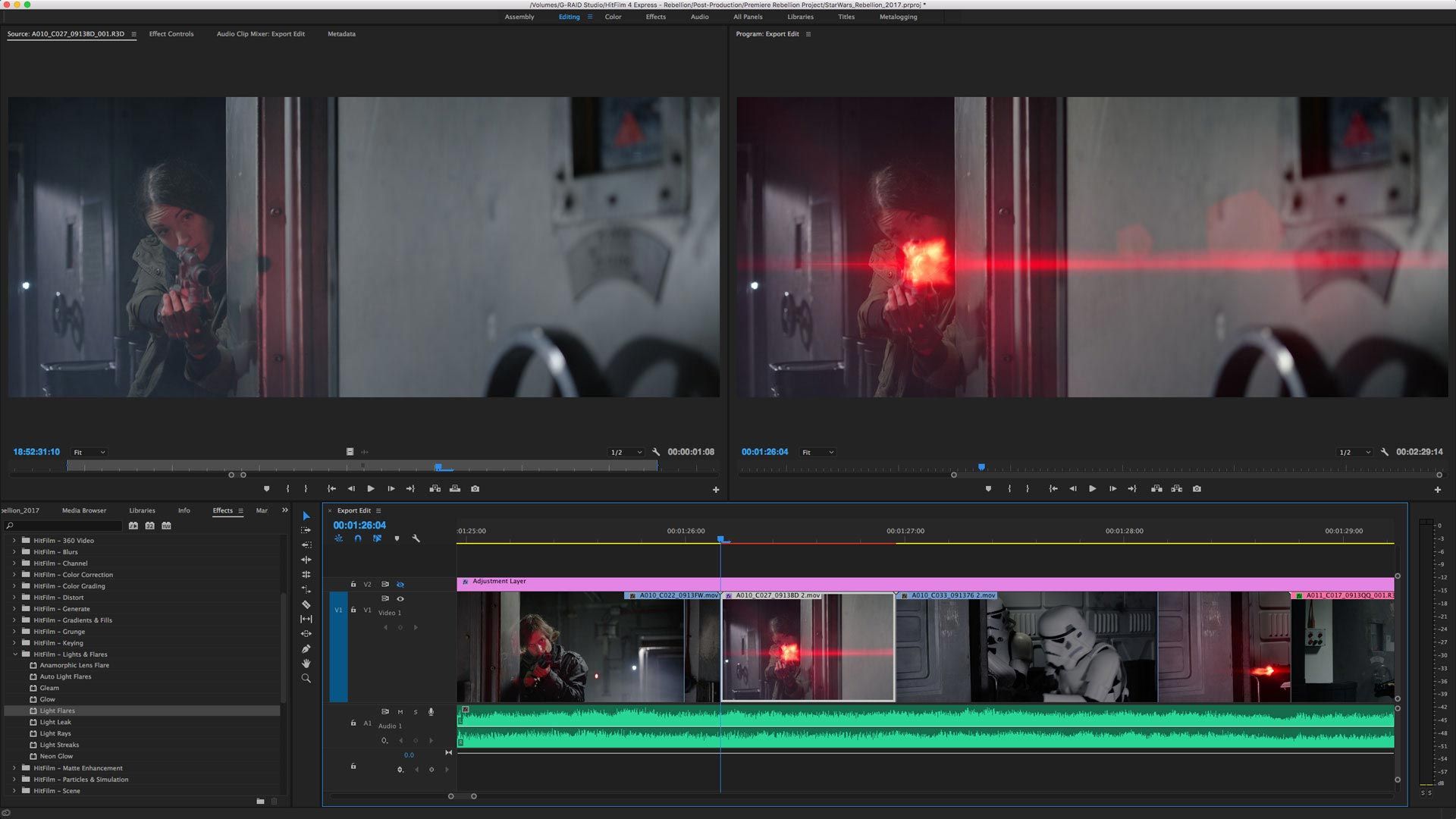

Blender can be hard, but Natron's interface is even harder to get, and manipulations take time. So does Natron, but in the case of the latter, you save money but not time.
Hitfilm express export settings movie#
In comparison, Blender can export your footage into 16-bit DPX format (formerly Cineon) up to 12MB an image : it's compatible with movie industry formats.īlender also allows masking, but in a way that is not really intuitive to me yet. HitFilm is a great addition to my toolbox, and I really encourage people to take a look into it. Nevertheless, I could export these lensflares on a png alpha sequence which I added to my footage in Blender. My guess is that the Pro version is probably set to a better res than the free one.

The resulting footage was slightly blurrier than the original, which led me to explore other export settings and file formats. When I started working on my new movie "Mortelle Consultation", I made some renders using HitFilm Express in full resolution, 8-bit png format. I would really recommend it for beginners who dedicate their videos to the web or small screens. Its variety of lensflares are really impressive too.
Hitfilm express export settings upgrade#
To a certain extent, you can add to that list a free version of Hitfilm called Hitfilm Express, which you can upgrade to HitFilm Pro and its addons (not free but affordable), and Da Vinci Resolve's free version.īeing a Blender and After Effects user for quite some time, I found HitFilm had a good equivilance with After Effects and a good deal of great features such as motion and plane tracking, which can come in handy when you need to change a car's licence plate for instance. Similar to Maya and 3DS Max, Blender is dedicated to 3D and Natron, its open source counterpart, to video. It's hard to be aware of every piece of software that has been created up until now, but if you're an indy filmmaker with a (close to) zero buck production and that spending money on expensive software is not an option, there is Blender and Natron, two powerful open source applications. But how does it go with the post production software? What is available, for how much and for what results? It is a fact that nowadays movie production technology has become more and more accessible, getting better, cheaper and smaller every year, to a point that allows even more people to get started for a few bucks. If you haven't got the time or the budget to master Maya and 3DS Max, there's a plethora of options out there that allow any one of us to obtain great VFX results, often with hardly any financial outlay.


 0 kommentar(er)
0 kommentar(er)
